
Nature
19:14, 09-Jan-2019
Life on Plateau: The legendary black-necked cranes made a promise with humans
Updated
18:13, 12-Jan-2019
By Xing Fangyu
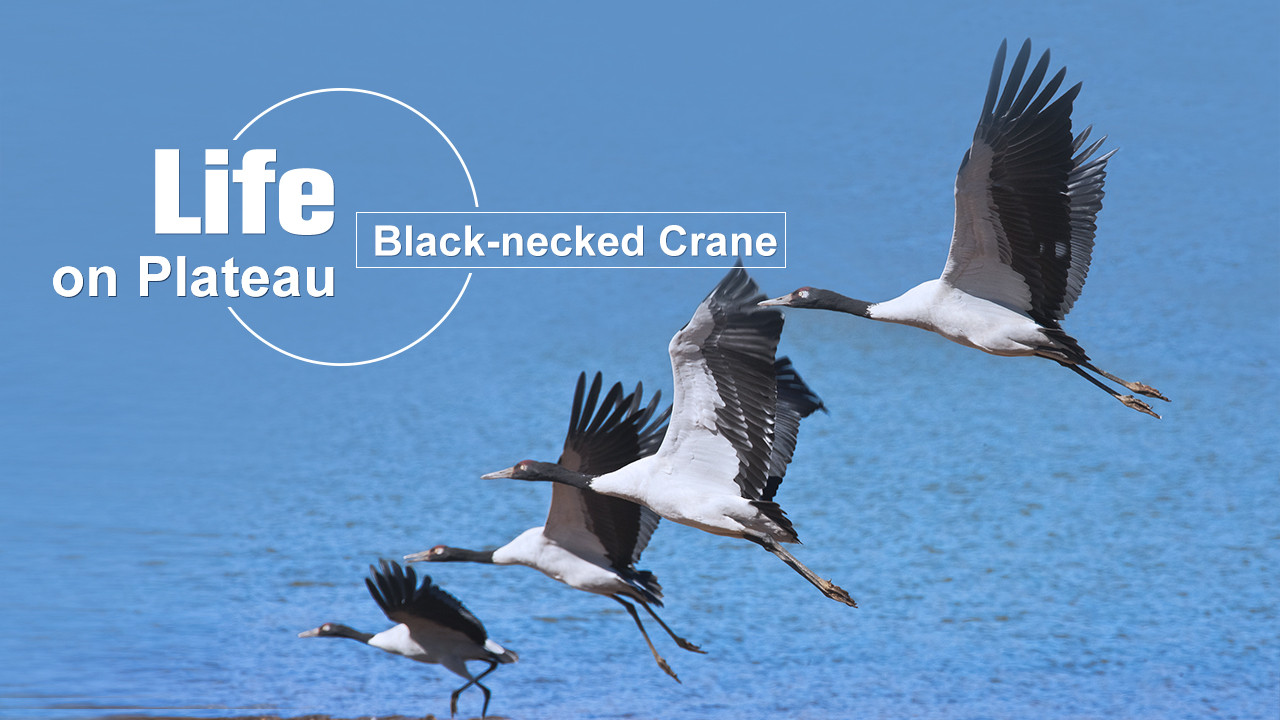
In Chinese legend, black-necked cranes were the rides of the goddess called the Queen Mother of the West. They escaped to the Earth because they didn't like life in heaven and went to Tibet instead.
But when the harvest season came, the black-necked cranes ate the wheat and highland barley from the farmers. The local people went to pray for heaven, asking for not let the birds destroy their crops. When the black-necked cranes found out, they confessed and made a promise with the farmers: Every year, the birds would go back to north to breed before cultivation time, and fly south after the harvest. The farmers would never harm the black-necked cranes, and the birds would never eat the crops.
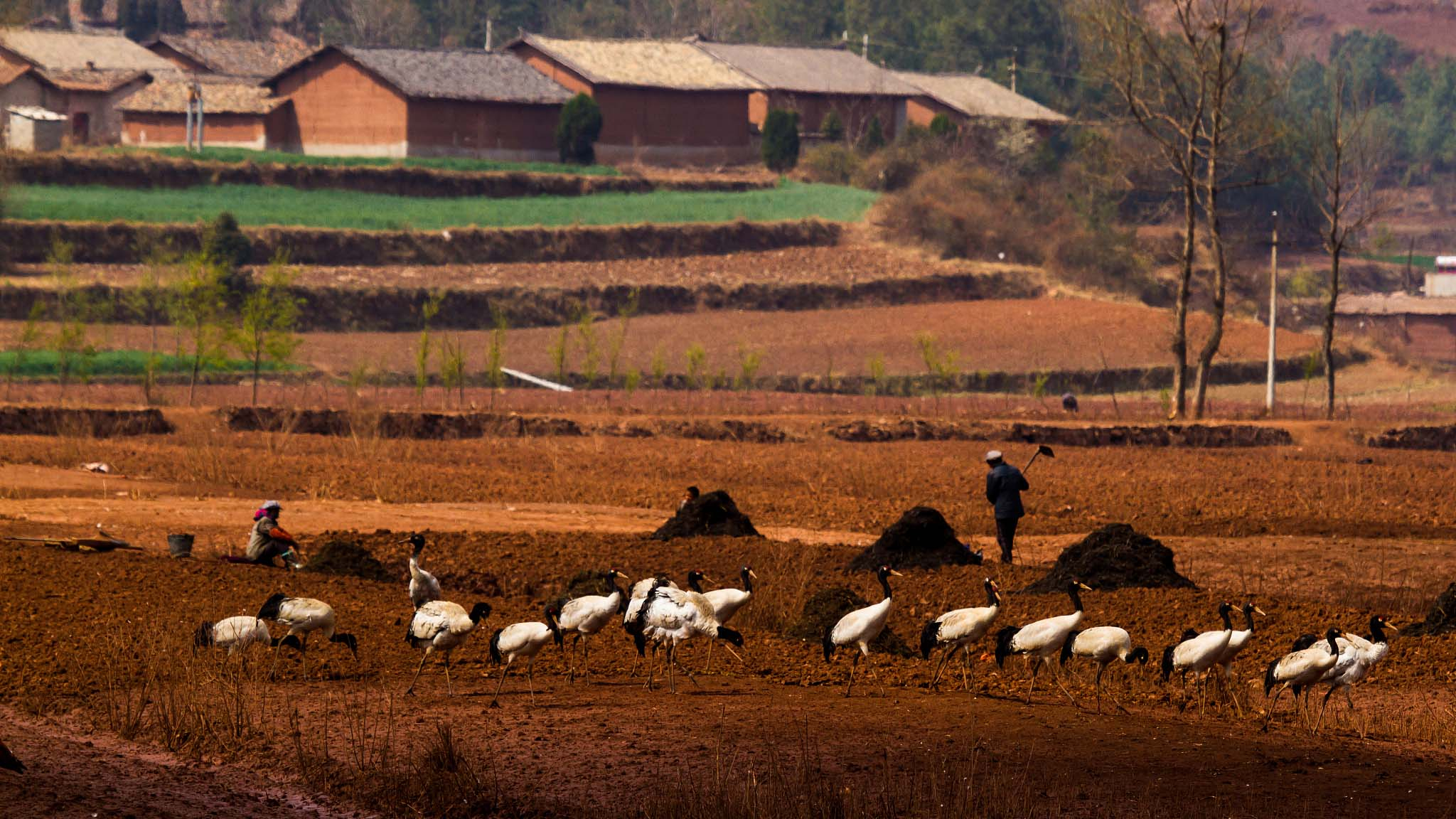
Harmonious society. /VCG Photo
Harmonious society. /VCG Photo
Help received from the people
Over thousands of years, the birds have become a regular visitor for the villagers. And the villagers also keep an eye on the birds, making sure they are all in good health. In Qiubei County of southwest China's Yunnan Province, a black-necked crane, which was left behind during the migration process, was found by local villagers and taken to a local nature reserve where it was nursed back to health and ready to rejoin its flock when they come back.
00:56
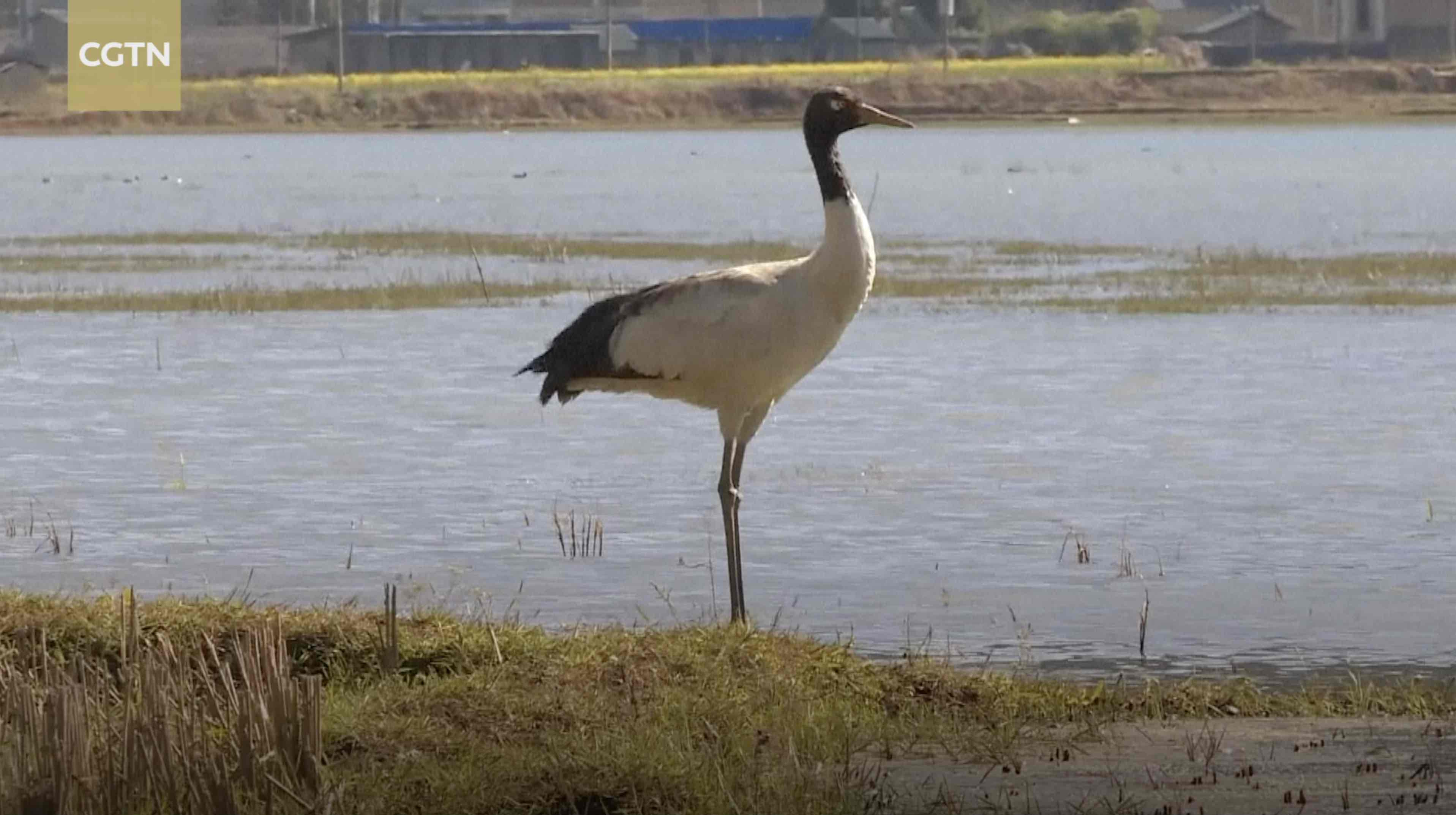
The world's only alpine crane species
The black-necked crane is endemic to China's Tibetan Plateau. In summer, the black-necked cranes are mainly found in altitudes between 3,000 and 5,000 meters. When September comes, the birds start their migration journey south via sheltered valleys or lower altitudes. About two thirds of the birds spend the winter in the valleys of Yarlung Tsangpo River and south-central Tibet Autonomous Region. The remaining population winter in Yunnan and Guizhou Provinces, and a small number are known to winter in Bhutan and India.
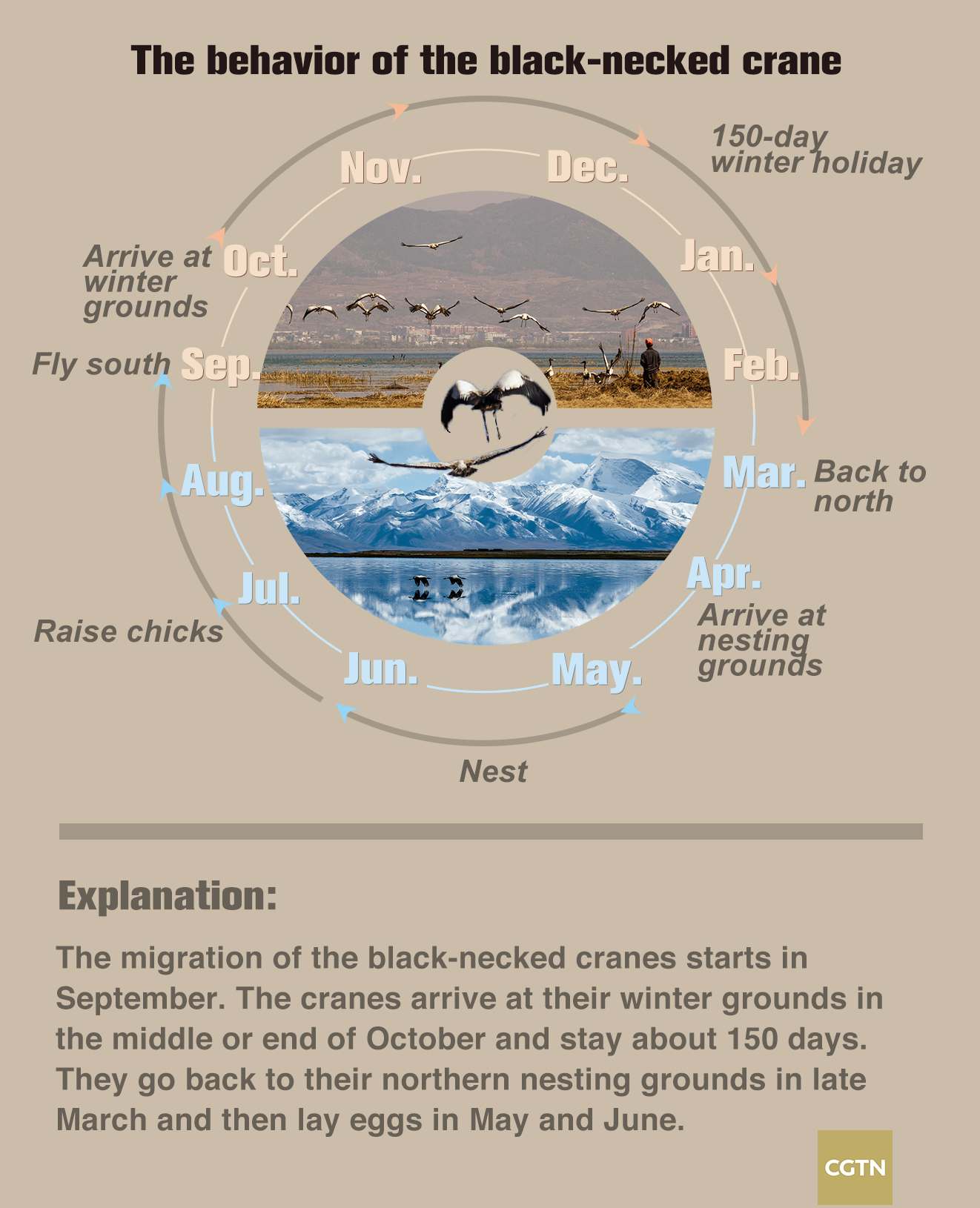
The behavior of the black-necked crane. /CGTN Graphic
The behavior of the black-necked crane. /CGTN Graphic
After 150 days of wintering, the black-necked cranes fly back to their northern nesting grounds and start a family. Each bird has only one partner during their lifetime. They dance and sing while creating the pair bond and lay their eggs in May and June, with only one or two per nest.
Behavior
As said in its name, the head, neck and tail of the bird is black, making it easy to distinguish from other crane species. The body feathers are a light grey and the naked lores and crown are dull red.
The bird has a wide variation in its diet. They eat plant roots, tubers, earthworms, insects, small fish and shrimp, small vertebrates and invertebrates. They forage in groups, with one bird acting as a guard.
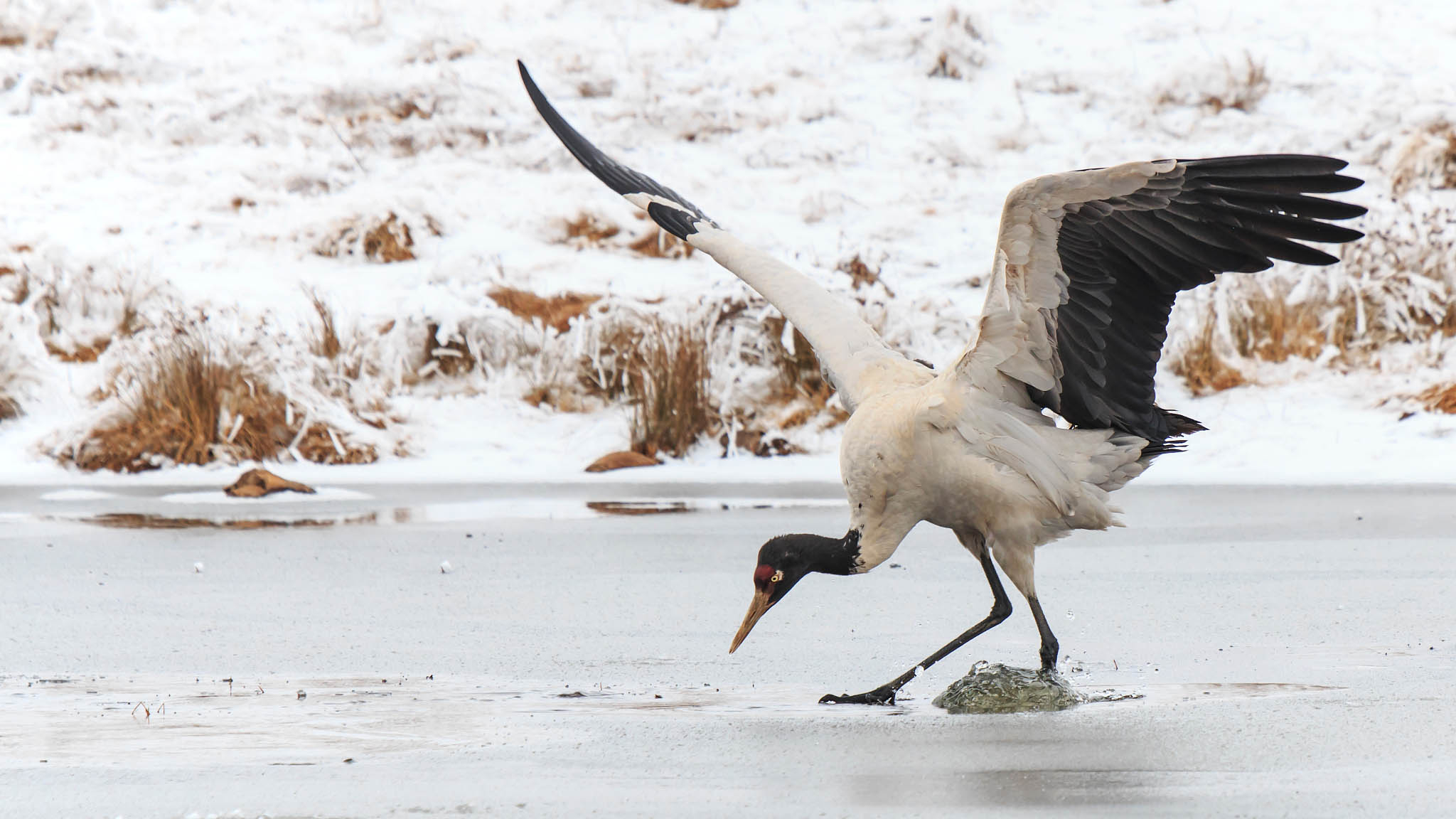
A black-necked crane at frozen lakeshore. /VCG Photo
A black-necked crane at frozen lakeshore. /VCG Photo
Threats
The black-necked crane has the ability to fly over the highest mountain of the Himalayas, but it's hard for them to go through this route due to food shortages caused by changing agricultural practices and loss of plateau wetlands.
The biggest challenge for the birds is habitat loss. The development of industry has decimated both the overall area for their habitat and amount of available food.
As farmers have changed their traditional agricultural practices from spring plowing to autumn plowing, waste barley, the birds' main source of food in winter, has been greatly reduced. Other factors, including hunting by human and other predators, and an overall low survival rate for chicks also threaten the population.
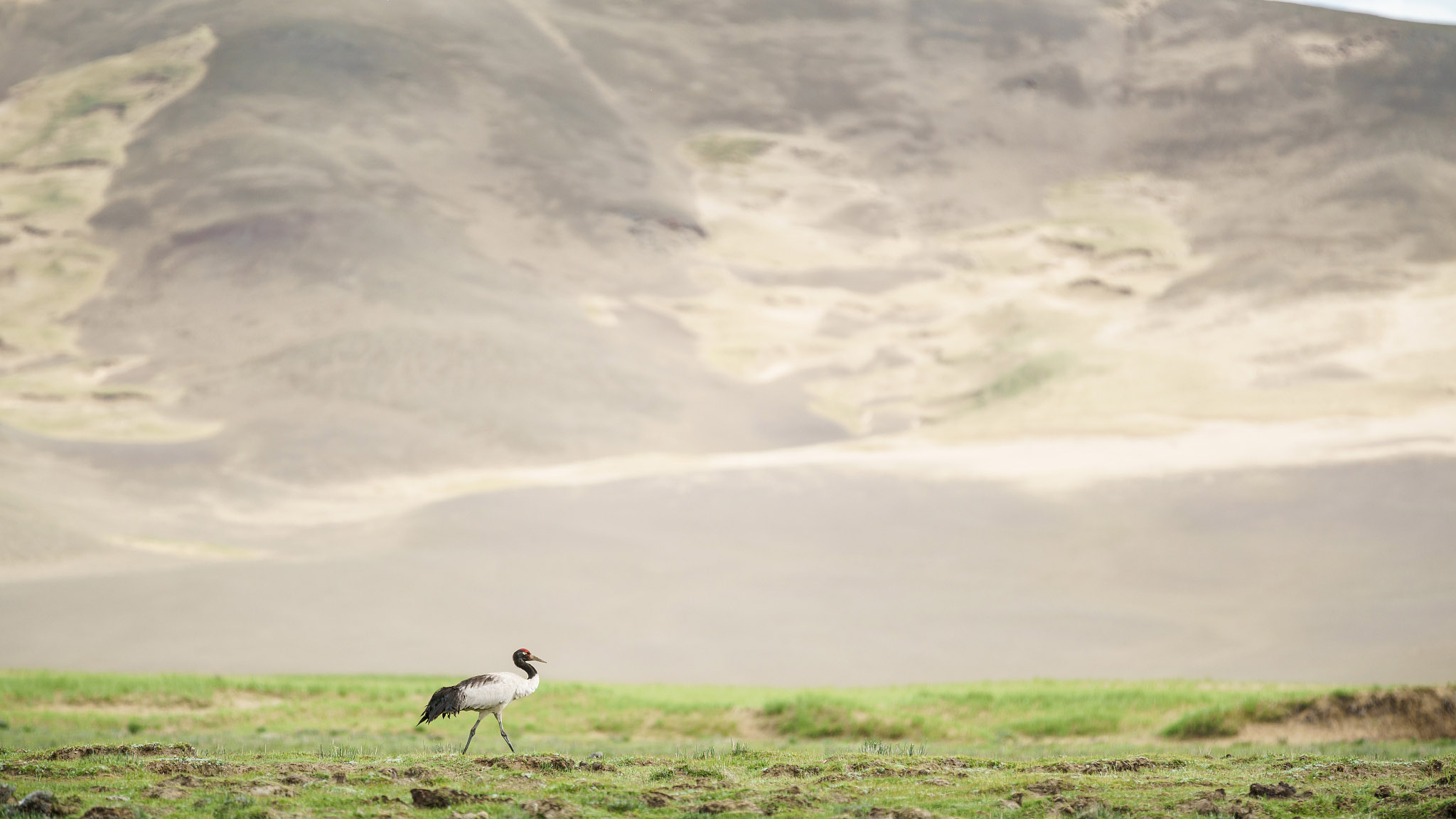
A black-necked crane in Tibet. /VCG Photo
A black-necked crane in Tibet. /VCG Photo
Protection
The black-necked crane is legally protected in its main habitats of China, India and Bhutan. But the population is still threatened in many different ways. China has built many natural conservation areas along the sites where the birds breed, their migration routes and wintering locations.
What's more, the black-necked crane is a meaningful cultural and religious symbol for the local people. It is a legendary bird which represents purity and nobility. The people are very friendly with the birds and farmers will leave potato and waste barley on their fields for the black-necked cranes throughout the winter.

SITEMAP
Copyright © 2018 CGTN. Beijing ICP prepared NO.16065310-3
Copyright © 2018 CGTN. Beijing ICP prepared NO.16065310-3